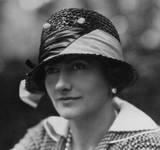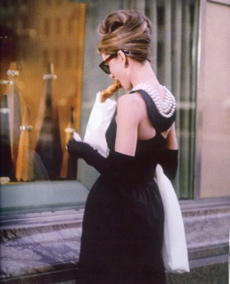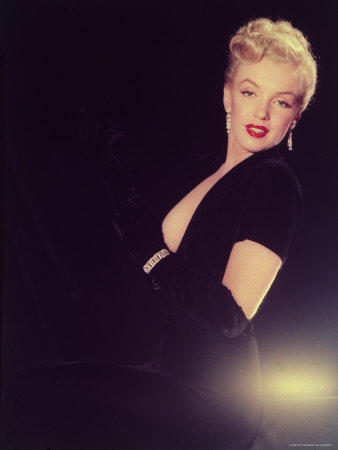Coco Chanel Profile

Coco Chanel became a renowned fashion designer in Paris, France when she opened her first millinery shop in 1910. Her designs were remarkable as being simple dresses, trouser suits, perfumes, jewellery, and women suits. Coco Chanel was born in 1883 in Saumur. When she was being born, her mother worked in the poorhouse. Her mother died while she was still six years and left her together with her sisters and brothers under the care of their father, who abandoned them later under the care of their relatives. She adopted the name Coco when she ventured as a concert singer in a café in Paris (Picardie 10).
Coco Chanel got the capital to open her millinery shop from her two boyfriends. One was a wealthy military officer, while the latter was an English industrialist. Her two boyfriends also greatly helped her to get women of society as her clients, and this enhanced the widespread propagation of her hats. Coco Chanel fashion design expanded rapidly, and by 1920, it had set a fashion trend with its unique ‘little boy’ appearance.
Her relaxed fashions that comprised of short shirts and casual look contrasted greatly with the corset fashion that was very famous by then in Paris. Her fashion designs appeared unique and thus, were highly admired. In 1922 she extended her line of production to introduce a perfume referred to as Chanel No.5 that became very popular and helped the company to make a lot of profit. Coco Chanel fashion business became less famous when she left her career to serving as a nurse in World War I. Similarly, Coco Chanel she accompanied her a Nazi officer boyfriend throughout World War II. When she returned to Paris, she came back in design fashion in1954 was remarkable and restored her to the first position of haute couture.
Her coming back was noted by the introduction of women purses, pea jackets and bell-bottom pants for women. Apart from being a fashion designer, Coco Chanel also designed stage costumes for the Cocteau’s play that existed in 1923 and Oedipus Rex play that happened in 1937. likewise, Coco Chanel still she designed film costumes various movies that such as the Renoir’s La Regle de Jeu movie. She worked throughout her life until her death in 1971. Karl Lagerfeld has been the acting chief designer of Chanel fashion house since 1983 (Lewis par.6).
Gabriel Bonheur, who is often referred to as Coco Chanel became the best designer in the 20th century. It is believed that her modernist philosophy originated as a result of inspirations from the menswear fashions. She borrowed her ideas from her male friends that she then implemented into women cloth fashion to come up with her special designs which became very remarkable in France and across borders. She augmented her special design by using different materials in her designs. The use of different materials such as leather and very high-quality wools in her designs enhanced her fashion greatly by making it very luxuries. Coco Chanel was very talented in designing a lot of jewellery that matched very well with the clothes she designed. Her ability to design elegant, but simple garments enabled her to become the greatest women fashion designer in the 20th century. By then, she was ranked among one of the 100 most significant women in France.
Gabrielle Bonheur was motivated to venture into fashion design after being frustrated by her singing. She started her fashion design by first designing hats for some of her friends. In 1910 she was successful in establishing her first millinery shop in Paris from the assistance of her former two boyfriends, a military officer and an industrialist which she branded as Chanel Modes. Due to her special designs, her design fashion propagated widely in Paris and globally. Her stores were renowned for selling women clothes that were characterized as being more casual, elegant and comfortable while still fashionable. In a matter of ten years down the line, Chanel had been successful in establishing basic modern fashions that comprised of three-piece suit that was designed during the war. Its main specializations comprised of pleated skirts, belted jumper and a loosely cut jacket with large pockets. In addition, the company popularized the little black dress, trouser suits and costume jewellery (Lewis par.8).
Analysis of the Chanel No.5 Perfume
In 1919 when Coco went back to Paris, she expanded her line of production to introduce production of perfumes. She produced a perfume that was referred to as Chanel number 5, which became very popular in Paris and worldwide. She launched the perfume in 1921, and this marked the greatest moment in the carrier of Coco Chanel. The perfume was packaged in a popular squire-cut bottle. The formula for this perfume was created by Ernest Beaux, who was known as an outstanding chemist. The Chanel No.5 was the first perfume that Coco Chanel produced and constituted of 128 ingredients that were blended by the chemist Earnest who was the pioneer who initiated the idea of developing synthetic perfumes by using aldehydes to promote the fragrance of the natural ingredients such as jasmine which were the ingredients of Chanel No.5.
During the development of this perfume, Earnest had proposed five different formulas to Chanel, but she preferred the fifth one. Coco Chanel was renowned for her uniqueness; she designed a simple squire bottle that greatly differed with the fanciful flagons packaging that was being used for packaging perfumes by then. The perfume started by being sprayed in the fitting rooms of Chanel boutiques before being offered as a gift to Chanel most respected customers later. This created an instant effect of scarcity and exclusively of the Coco Chanel perfume. Later, Coco Chanel extended the marketing of the perfume by giving Pierre and Paul Wertheimer, which was a very successful perfume cosmetic and Fragrance Company the production and distribution rights. This enhanced the sale of the perfume, which enabled Coco Chanel to realize a lot of profit from the sale of the perfume. After production of this successful perfume, the company also produced more other perfumes later on.
In 1922 Chanel produced Chanel No.22 that was referred to as Cuir de Russie, in 1926 Bois de Iles was produced and Gardenia perfume being produced in 1927. In 1970 Chanel launched another very popular perfume that was called No. 19, which was named after her birthday. Its scent has remained very common until today. The death of Coco Chanel resulted to the Wertheimer family taking the management of the House of Chanel. The House of Chanel had refused to sell the name to anyone, but have opted to retain the sole control of all the products that bear the renowned and luxuries label of Coco Chanel (Lewis par.7).
Analysis of the Little Black Dress

Chanel introduced the Little Black Dress in 1926. The dress became very popular within and outside Paris such that every woman wanted to have it in her wardrobe. It was designed in such a way that its blank slate versatility made it very suitable to be worn during the day or in the evening. It was often termed by Vogue as the “new uniform of the modern women”. Despite the existence of Black dresses there before, the black dress that was designed by Chanel was unique such that every woman greatly admired to possess it to the extent of it being considered as the Haute couture standard. The dress was regarded as simple but elegant.
The dress was usually proportionally cut and was commonly made with very high-quality materials. The dress was mostly made from traditional elegant materials such as lace, tulle and le, embroideries, and soft weightless silks – in a newly tailored manner. The black dress was designed as being short, straight and without waste and produced only in black colour. It was often made with the jersey materials, which made it appear elegant and enabled the body to be flexible and allowed one to move more comfortably.
Chanel’s black dress is believed to have originated when her lover boy capel passed away, and she resulted in wearing black. The first black dresses she designed were designed from the inspirations of the simple black morning attire that were being worn by peasant women in French villages when she was a kid. The widespread propagation of the little black dress increased greatly when the dress was adopted by the star actors who participated in the new movie houses in Paris. Similarly, during this era, many American clothing manufacturers visited Paris occasionally to copy designs present in there.
Therefore, when they learned about the popular black dress in Paris, they visited Paris to see it and then started recreating the little black dress which greatly helped to help in the proliferation of the Chanel little black dress. By the end of 1930, the little black dress had successfully popularized to even feature in advertising phrases and being termed as the kind of clothing any sophisticated woman should wear (Picardie 43).
The dress became common in France, American and other western nations such that every woman that was regarded of honour possessed the Little Black Dress which was often termed as LBD. The occurrence of the little black dress revolutionized women’s fashion. Prior to the appearance of the little black dress, wearing of black dresses was very scarce and mostly reserved as the colour for funerals and instances of mourning. When Chanel introduced the Little Black Dress in 1926, it became very popular such that women worldwide changed their custom to embrace wearing of the Little Black Dress. The Little Black Dress was very outstanding such that even nowadays the famous Parisian fashion house still is renowned for making the little black dress.

Works Cited
Lewis, Jonson. Coco Chanel Fashion Designer, Fashion Executive. 2011. Web.
Picardie, Justine. Coco Chanel the legend and the life. Harper Collins, London. 2010. Web.